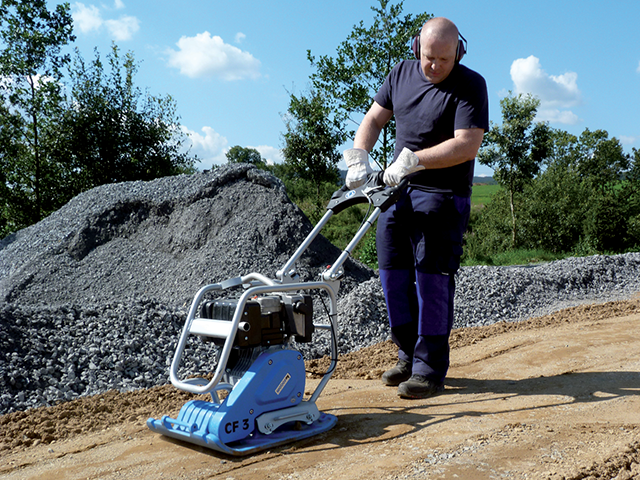How to use a Plate Compactor 101

Whether it’s to build a path, a patio or even a driveway, using a plate compactor to flatten your surface for stability before laying pavers or any other surface on top is essential when it comes to getting a professional looking finish. But while operating a compactor is relatively straightforward, it’s important to remember they’re power tools that need to be handled safely. So, with that in mind, here’s some advice on how you should prepare your site and yourself before getting started.
Get the right gear for the job
It goes without saying that covered shoes and power tools are a good idea, but when you have a compactor that weighs over 50kg vibrating at a high frequency it’s worth considering a pair of steel cap safety boots. Moving compactors can become difficult, especially after pushing one around all day and the last thing you want to do is drop one on your big toe. Dust and noise are always going to be factors you need to deal with whenever operating a compactor too. Dust masks, safety glasses and gloves can all be purchased cheaply and will make your job much more comfortable.
Get your site set up
To make the most of a plate compactor, it’s important to have everything prepared before you think about turning it on. Regardless of the size of your site you should have it clear of any tools or obstructions that could cause you to trip, because once you get started it will be hard to hear anything other than the engine. Using a screed or rake to roughly level your surface is a good idea because you don’t want to end up compacting firm mounds of stone or sand that need to be redistributed with a rake later on. If it’s wet, sometimes this can aid with compaction however it’s not suitable to use a compactor if the conditions are soaking wet or muddy.Keeping a hose nearby to clean the base plate is also necessary to maintain a level surface when it’s wet,as is a bottle of kerosene to remove asphalt form the plate if that’s the surface you’re working with.
Get started
With everything in place to make your job a success, now it’s time to get started. The majority of compactors are powered by pull start, petrol motors with a choke. And to start one your first step is to set the compactor on a flat section of the area you’re compacting.
There will be a flip to switch on, and a choke to close before priming the engine and pulling the cord to start the engine. It’s important to only prime the engine a couple of times so you don’t flood it and open the choke once your compactor is running. If there’s a throttle control near the engine, now is the time to open it up and get underway. Your compactor will move forwards on its own, but you will need to hold the handle with both hands and provide some resistance for it work correctly. Turning your compactor of is as simple as flipping the power switch or holding the throttle off until it has powered down but be sure to let the compactor sit until it has cooled before moving it – there’s nothing worse than an exhaust burn to finish a hard day’s work.
If you’re unsure about which compactor is best suited for your job, check our previous post that goes over the different options available or feel free to contact us.